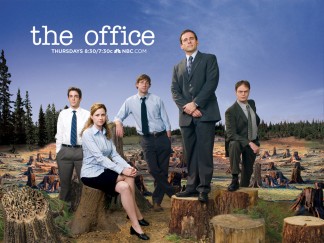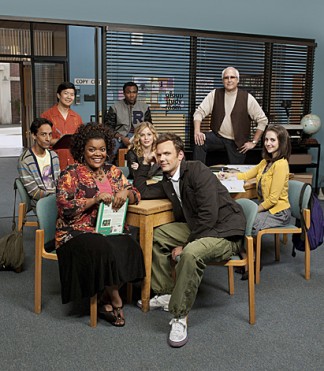
Jordan needed a quick solution for lighting a small shoot this afternoon and built a small soft-box. I passed him the pirate tape. We were immensely proud of ourselves afterwards.

The only blog you’ll ever need.

We’ve been getting a lot of love for our Crookers ‘Remedy’ video. And like good, young thieves we’re giving back.
To be precise, we’re giving away the payphone, the VW logo and the $ chain that our lads stole in the music video. Gotta love the foolishness of youth.

Like the time I broke into a Burger King and and walked away with a 6 foot cardboard T-Rex (promo for the The Lost World). Or that vending machine in Maine. And all those Upper Deck baseball cards.

So, how to win? In the comments section of this post, tell us about your most absurd act of petty larceny. We’ll select our 3 faves and snailmail you one of these here crooked items.


In 2010, Desedo has been spending a lot time in the streetwear space, for both business and pleasure. On Monday and Tuesday this week is the Cargo Tradeshow at St. Patrick’s Center in SoHo. I spoke with Rich Rodriguez, co-founder of the show, about the rise of small clothing labels over the last decade. Some thoughts from that chat which keep running through my head:
As the means of production and distribution become more democratic, and other art forms are digitized, this has paved the way for a social value shift in tangible goods. Clothes are increasingly personalized and contain more emotional data now than in the past few decades.
People can start clothing labels in the way they used to start rock bands. And it is a new mass space of artistic sharing/ entrepreneurship that has a clear path as a business model – clear at least in the ability to track and understand the ROI. Understanding this is why Cargo opens their doors to both industry buyers and the public. This approach echos the way that brands/events now court not just established press, but new media too.
As streetwear matures – labels going beyond t-shirt/hoodie into cut and sew – we’re starting to a new influx of styles and genre blending in terms of fabrics, patterns, colors and details. In many ways this is an offshoot of the hybrid/mashup culture of both Gen Y and hip-hop – creators of clothing within this space may see opportunities that are not on the radar of other folks. And in turn this has fostered a space for clothing to both be a patron of artists from other mediums as well as a new space of discourse about ethics and politics.

Our Crookers music video premiered this week on NME. It’s also getting love from The Fader, URB and over 100 blogs from across the globe.
Directed by Paul Kamuf, lensed by Paul Starkman, cut by Neal Usatin and with a cameo by MHB, it’s clocked over a quarter million views throughout the web.

In 2009, mass culture became transfixed with Lady GaGa. More than 100 videos about her have +1,000,000 YouTube views and every publication has spilled ink about her.
I watched the Bad Romance video and fell under her spell. And so, wanting to understand more, I asked 3 smart people what they find compelling about GaGa.
Christine Huang (on GaGa)
Her blatant exhibitionism and absurdity. I’m not sure if she (or the people who made her) totally planned it this way, but GaGa has turned the media circus in on itself. It’s a meta-spectacle. other pop stars have done it too – obvs Madonna, and even Britney with Circus… but i think GaGa is so far out there, she’s really out to shock. Like Marilyn Manson, but with more talent. and more of a palatable message.

Johanna Beyenbach (on Bad Romance)
In the lyrics, her masochism; wanting something that you know is going to be a disaster because the impending doom adds an edge & makes it that much more exciting.
In the video, I love the clothes, but also how grotesque parts of it are. It’s in top 20 lists alongside mundane videos from Nickleback, Creed, Rob Thomas and Bon Jovi. The fact that she got her slightly disturbing, dark thread through mainstream culture by way of flashiness and haute couture is kind of brilliant.

Courtney Brecht (on GaGa & Bad Romance)
I’m thinking about GaGa in the context of working on my MFA thesis. Part of what intrigues me about her is that I can never get a real sense of what she looks like.
If it’s not the white mohawk vinyl suit that entirely covers up her face, or the jewel crown, or the weirdo computer exaggeration of the eyes when she has that pink hair, it’s something else. Like her body not even being real, note the accentuated back-boniness at one point in the video. She’s really cultivated this desire to make us look at her even more.
My thesis is based on the desire to understand another person based purely upon physical appearances, and how this synchs with approaching a painted portrait. I’m trying to understand this rupture or synthesis between the interior vs. the exterior facade/constructed exterior facade. How do the visible surface and and the interior life come together and how to they diverge? And how do people feed into this?
So as I watch this video, I’m thinking about the history of our efforts to deduce character from physical features, like Victorian social “sciences” of Phrenology and Physiognomy. This was all before psychology, and so people tried to predict criminality, intelligence, even predisposition towards madness based on angles and ratios of the cranium and face.ÂÂ

Modern day, while the bent is less about distinguishing the “other”, we still try to manipulate genes and genetic inheritance (plastic surgery, genetic counseling, hairstyles, fashion, jewelry, etc.) in order to someohow make our exterior a reflection of who we think we are on the inside. Often a transformation of the exterior can really bring about a change in the interior (think the fright wigs/cross-dressing of child soldiers in Liberia-linked to the idea that these things are mystic and bring certain powers), or “real-life superheroes” who put on costumes in real society in order to carry out good deeds (why can’t they just do it in plainclothes?).
I think Lady GaGa, by having this totally outrageous fashion facade, feeds into our society’s desire to glean the inner essence of someone based upon her outward appearance. GaGa has built an entire wall and facade that never really answers any of your inquiries and perpetually keeps you curious and intrigued.
And at the same time, she might be vaguely insecure given that she seems to be able to be outrageous when her face or hair, etc. is covered by wigs or fashion masks or sunglasses. Maybe this is her way of being “LadyGaga the Performer” rather than who she ‘really’ is? Or maybe that is who she is? It’s mystifying….

There are many different responses that one can have to this ad, from loving to hating Wal-Mart, nothing new there. And the ad follows standard beats of contrast and magic, almost like beer spots in the early 90s. Nothing new.
But here is why it caught my eye. This is the first American ad to use the theater of Iraq/Afghanistan as an on-screen location. This is a shift away from treating The War as a risky ‘other’, like The Scottish Play or He-Who-Must-Not-Be-Named. In doing so, Wal-Mart visually acknowledges this now normal, painfully mundane part of American Life that exists for tens of thousands of families. The abstract is made all the more real.
If we are using adverts as a barometer of cultural shifts, and taking a page from Grant McCracken, I think that this Wal-Mart spot and Best-Buy’s Eid ad are two of the most significant moments in 2009.
Neither of these ads break new ground in trends, tech or storytelling. But in different ways, they both signify new nods from Fortune 500 CMOs to heretofore unnamed consumer spaces.

The character Jim Halpert has often been the audience’s avatar or voice of reason. Michael’s transformation has come with Jim’s ascendency to co-manager, and Jim has also transformed from our locus of hope into our own nightmare.
Jim’s pragmatic efforts always fall short of Michael’s whimsy. We now know that Jim will never beat Michael, for the show’s structure hinges on Michael always pulling through the fire. Jim’s ‘knowing glances’ to camera affect no change. Nor do his actions as manager. Slowly, we now see Jim becoming pained, irrelevant and obnoxious.
Are the writers crafting a larger commentary, that Jim realizing his futility is an existential crisis for us all?
Meghan Keane has written this whipsmart article about Jim Halpert. And our friend Nick takes it more macro, noting that
Lately I’ve found Jim excruciatingly annoying and the show almost unwatchable. Maybe Jim’s story arc is following the show itself: it used to be the antagonistic, irreverent upstart, but now it is the flagship of a declining company (NBC) that is accepting it’s role as the lame middle manager, and lording over the truly innovative shows like Community or Parks & Recreation.
Similar to HBO’s The Wire, structure is always larger than individuals. The office space of Dunder Mifflin will crush all who aim to escape. On the flipside, Community‘s college of Greendale is where hope now begins anew.
